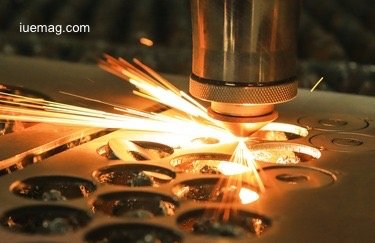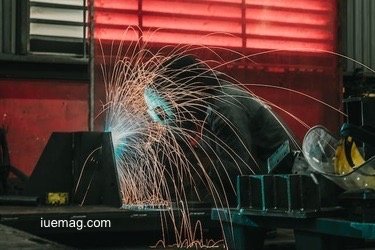

Why Is Metal Fabrication And Repairing An Important Industry
 Metal fabrication and repairing refers to the process of cutting, bending, welding, machining, and assembling metal components into finished products or structures.
Metal fabrication and repairing refers to the process of cutting, bending, welding, machining, and assembling metal components into finished products or structures. As per fabrication experts TurnWeld, from cars and planes to buildings and bridges, metal is an essential material used across many critical industries. A robust metal fabrication and repair sector is vital to supporting these industries and the overall economy.
Key Industries Relying on Metal Fabrication
1. Transportation Industry:
The transportation industry relies heavily on high-quality metal components for everything from vehicle frames and engines to rails, ships, and airplanes. The ability to fabricate and repair these metal parts efficiently allows for safer, more durable vehicles and infrastructure.
2. Construction Industry:
Metal plays a fundamental role just as much as a steel casting foundry plays a fundamental role in construction. Steel and other metals make up building frames, bridges, tools, and more. Effective metalwork translates into sturdier structures.
3. Energy Industry:
The energy industry also depends on meticulous metal fabrication and repair for infrastructure like oil rigs, pipelines, nuclear reactors, wind turbines, and solar panel parts. Precise manufacturing and maintenance help prevent dangerous accidents and failures.
Benefits of Metal Fabrication:
1. Economic impact
In addition to enabling other vital industries, metal fabrication and repair is also a major economic driver itself.
2. Jobs and Opportunities Created
The industry provides stable, skilled jobs for welders, machinists, metalworkers, and technicians. One estimate puts the total direct and indirect jobs supported by U.S. metal manufacturing at 17 million. These jobs also can't be easily outsourced overseas.
3. Innovation and Technology
Metal fabrication also spurs innovation in advanced technologies like robotics, automation, and software. For instance, complex precision cutting and joining processes done by human metalworkers increasingly incorporate computer-controlled machines. Investments in these emerging technologies allow metal fabrication and repair companies to work faster, more efficiently, and more sustainably.
4. Environmental Benefits
Speaking of the environment, modern metal manufacturing and maintenance facilities focus heavily on conservation and safety. Through pollution control equipment, water and energy efficiency measures, and waste reduction techniques, metal fabrication's impact on the planet continues to decline. Some companies even use renewable solar and wind energy to power their metal shops.
5. Future Outlook
As populations grow and require more transportation, buildings, energy and infrastructure, demand for high-quality metal fabrication and repair services will continue rising globally. Fortunately, modern innovations in automation, digitization, and sustainability will allow the industry to scale up responsibly while providing good jobs. That's why effective metalwork will remain a cornerstone of a thriving economy for the foreseeable future.
What are Some Common Metal Fabrication Methods?
 Some of the most common metal fabrication techniques include cutting, machining, welding, bending, drilling, grinding, sawing, shearing, laser cutting, and stamping. These processes shape raw metal materials into finished components or structures.
Some of the most common metal fabrication techniques include cutting, machining, welding, bending, drilling, grinding, sawing, shearing, laser cutting, and stamping. These processes shape raw metal materials into finished components or structures.What Industries Rely the Most on Metal Fabrication?
The transportation, construction, energy, aerospace, defense, medical, and heavy equipment manufacturing industries all heavily rely on precisely fabricated metal parts to function. Metal fabrication also enables the production of all kinds of consumer goods.
What Metals Are Commonly Used in Fabrication?
Steel, aluminum, and titanium are the most commonly fabricated metals due to their versatility, durability, strength-to-weight ratio, and abundance. Copper, brass, nickel alloys, and tungsten are also important. Emerging advanced alloys continue expanding the possibilities.
What are Some Innovations in the Metal Fabrication Industry?
Metal fabrication leverages cutting-edge developments like automation, robotics, 3D printing, laser cutting, advanced welding techniques, software, and digitization to improve speed, precision, quality, and efficiency. Investments in training also develop workers' technical skills.
What Does the Future Look Like for Metal Fabrication Careers?
The future looks bright for skilled metal fabrication professionals as demand increases for transportation equipment, infrastructure, buildings, and other metal products. Welders, in particular, are projected to experience about 8% US job growth over the next decade.
Conclusion
Metal fabrication, machining, and maintenance are indispensable pillars bolstering critical transportation, construction, energy, and manufacturing industries. This complex, specialized sector also creates numerous economic opportunities while striving for environmental sustainability through modern technological advancements. That's why metal fabrication and repair will continue to be a vital force across the global economic landscape for years to come.
Copyrights © 2025 Inspiration Unlimited - iU - Online Global Positivity Media
Any facts, figures or references stated here are made by the author & don't reflect the endorsement of iU at all times unless otherwise drafted by official staff at iU. A part [small/large] could be AI generated content at times and it's inevitable today. If you have a feedback particularly with regards to that, feel free to let us know. This article was first published here on 28th November 2023.
Overthinking? Uninspired? Brain Fogged?
Let's Reset That! Try iU's Positivity Chat NOW!

All chats are end-to-end encrypted by WhatsApp and won't be shared anywhere [won't be stored either].


